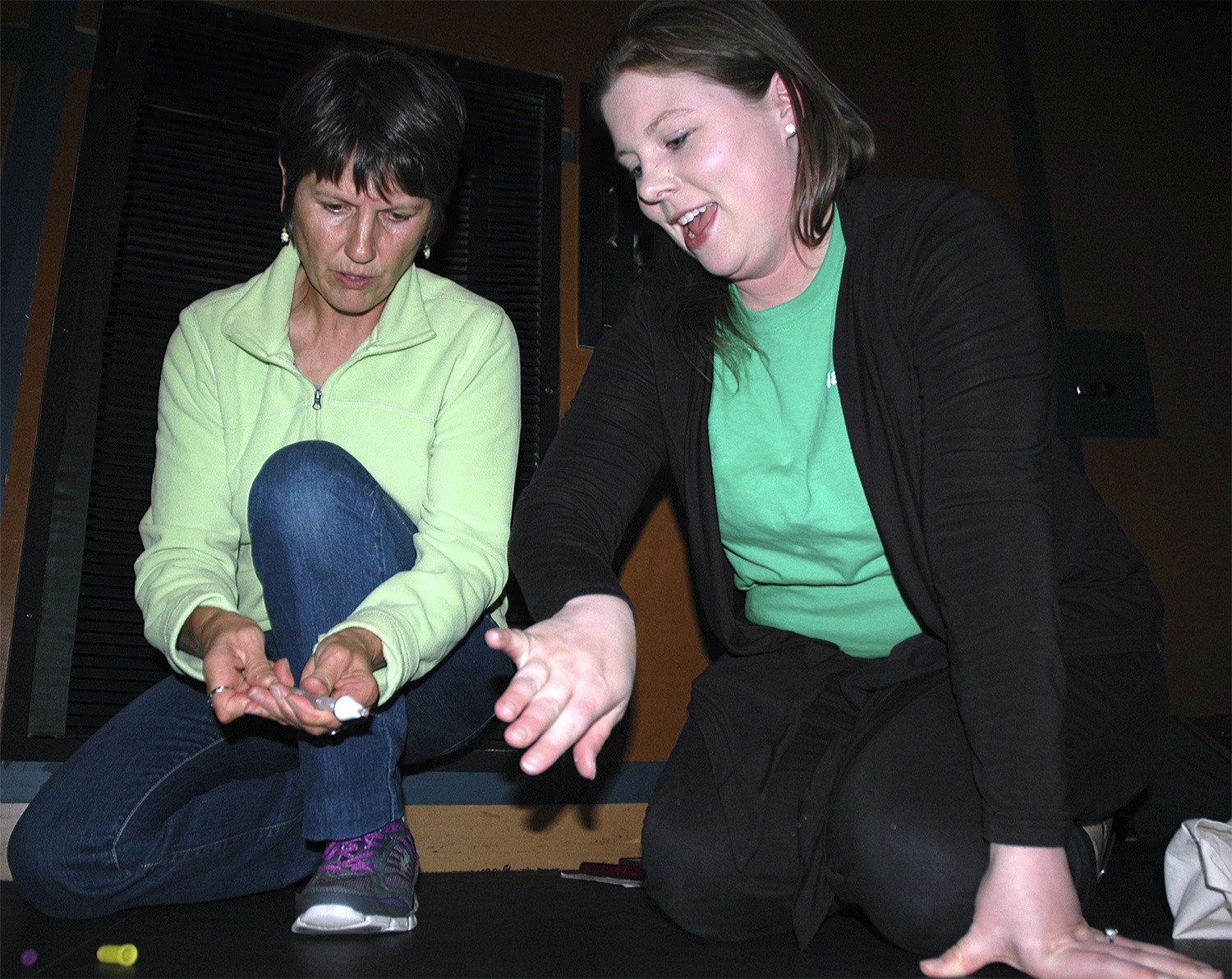SMOKEY POINT — Although the Arlington Police Department’s Smokey Point substation was inaugurated Sept. 2, officials explained that it’s still a work in progress.
Arlington Police Cmdr. Terry Quintrall explained that the substation allows patrol officers who work in the city’s southern beat, in Smokey Point, to complete their casework without driving all the way up to the police station in downtown Arlington, in the city’s northern beat.
“That’s a fairly long time in transit to keep those officers out of this area,” said Quintrall, who believes that keeping the officers closer to their beat will aid in the goal of reducing crime 30 percent over the course of the next three years.
“The community, businesses and city management recognized the need for this substation,” said Tolbert, who also expressed her appreciation to Rossum Properties for working so swiftly to secure a three-year lease.
While new School Resource Officer Stephanie Ambrose demonstrated the facilities’ working by logging onto the computer, 175th Street resident Michael Rexford voiced his approval of the substation’s presence near his neighborhood.
“The biggest problem we’ve had here is the transients,” Rexford said. “They used to make threats and even show up in families’ back yards, but the police made a lot of progress in cleaning them out. With the new station here, the police will be able to react even more quickly.”
Arlington Police Cmdr. Brian DeWitt agreed that transients are far less visible in the Smokey Point area, but still deemed them a problem.
“Our citizens and businesses don’t see them hanging around the McDonald’s or the Safeway, but we’re still finding evidence of them in the wooded areas,” DeWitt said.
Although the south beat patrol officers will be filing reports from the Smokey Point substation, DeWitt noted that police need to expand their pool of volunteers before they can open the station to the public. The average police volunteer only works 10-20 hours a month, and the substation needs enough volunteers to greet citizens eight hours a day, 40 hours a week.
“We need to be open the same number of hours each day, so that customers can rely on us being there to greet them,” DeWitt said.”We don’t have the money for staff, but we’re also checking to make sure we’re not violating any collective bargaining agreements by trying to recruit this many volunteers.”
Quintrall thanked Mayor Barbara Tolbert and the City Council for taking swift action to approve a south substation. He also credited J Lee Floors with supplying the carpets and the Arlington Walmart with donating the computer equipment. Both were installed in barely more than a day each, thanks to donated labor from city staff and community members.
Quintrall praised a host of personnel who connected the computers to the city’s networks, furnished the office and have coordinated the ongoing efforts to turn the once-vacant Suite 15 at 17306 Smokey Point Dr. into a substation. He singled out Arlington Police Sgt. John Ventura for identifying the “key strategic location” where police should increase their presence in the Smokey Point area.
“From the City Council, staff and police department to citizens and businesses, this effort brought together all five prongs of the ‘All-In’ campaign that [Arlington Public Safety Director] Bruce Stedman has talked about,” Quintrall said. “We made this happen by working together.”
Given how much time it could take to recruit enough volunteers to staff the substation, much less train them, DeWitt admitted that there’s no set timetable for when it might open to the public. Still, between the substation and the restoration of the Arlington Police Pro-Act Team within the same week — the latter to proactively pursue recurring problems, rather than respond to 911 calls — he shared Quintrall’s optimism that the city will meet its 30 percent goal.
“That’s just a ten percent reduction every year,” DeWitt said. “We’re going to be entering these statistics on our website, so that citizens can compare the numbers of each type of crime, month to month and year to year.”







